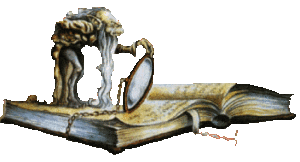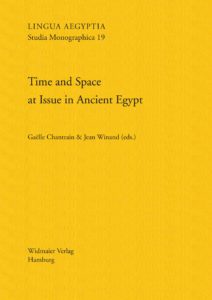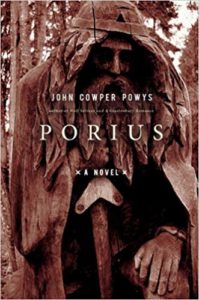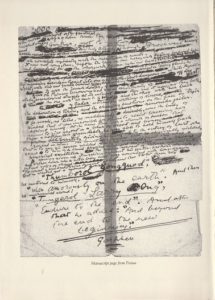
LIVRES POUR 2019
Nous vous avons déjà dit ce qui vous attendait – en 2019 au lieu de 2018 – à propos du fameux « Armistice » qui n’en fut pas un, puisque la Grande Guerre a continué, continue et menace plus que jamais de s’étendre, comme les prophètes de l’eschatologie n’ont cessé de nous l’annoncer, surtout ceux qui en ont vu les débuts in situ. De leur nombre, les quelques rescapés devenus écrivains planétaires et « substance du XXe siècle » dont on ne peut se passer si on veut comprendre ce qui arrive : Malaparte, Céline, Graves, Sassoon, Cendrars, quelques autres Français, Jünger… On n’interrogera ici que ces plus grands, parce qu’il faut savoir se limiter, en espérant ne pas défunter nous-mêmes avant d’avoir fini.
On aurait dû vous faire connaître aussi, au début de 2018, un livre publié aux USA en 2014, qui venait de sortir en français fin 2017. La fée Carabosse des ordinateurs en ayant décidé autrement, notre « compte-rendu de lecture », remis de jour en jour à plus tard, a fini par se générer, si on ose ainsi parler, une queue de comète de plusieurs posts, au fil des réflexions et de l’approfondissement du sujet. Car nous nous sommes aperçus que, de l’essai en question, on avait vite fait de déboucher sur la place – le rôle – des femmes dans la société. Au moment où le patriarcat est tellement tombé en quenouille qu’il n’est plus cornaqué que par une bande de femmes châtrées, on ne voit pas pourquoi on n’apporterait pas notre grain de sel à l’empoignade, pourquoi, surtout, on ne cogiterait pas un peu sur ce que pourraient être, à l’avenir – à supposer qu’il nous en reste un –, les relations entre les hommes et les femmes : Au bout de 110.000 ans de relations empiriques entre les mères et les pères, les filles et les fils ont-ils un avenir ou pas ?
Bref, faux ARMISTICES et vraies ou fausses AMAZONES sont censés s’entrecroiser à bord des Grosses Orchades dans le temps qui nous reste à nous. Et vogue la galère.
Deux autres livres dans l’immédiat… tous les deux pour les bilingues :

Le Temps et l’Espace en question dans l’Égypte ancienne
Ce coup-ci on n’est pas en retard pour vous l’annoncer … On regrette juste que, les auteurs étant belges francophones, leur travail ne paraisse pas en français et que les articles qu’il contient n’aient pas été traduits de leur langue d’origine. En français ou en flamand, voire en allemand (troisième langue nationale), d’autant que l’éditeur est teuton… Mais puisque l’anglais remplace temporairement le latin, contentons-nous d’occuper nos provinciales alvéoles et attendons des temps meilleurs.

Gaëlle Chantrain & Jean Winand (eds)
Time and Space at Issue in Ancient Egypt
Lingua Aegyptia Studia Monographica 19
Hamburg, published in December 2018
viii+242 p., 11 colour and 83 b&w illustrations, paperback, 495 g. (ca.)
ISBN 978-3-943955-19-4
ISSN 0946-8641
- Price 55.00 €
- Reduced price for subscribers to LingAeg (Journal) 39.00 €
NOTICE:
Choose your subscription type when entering your billing information.
All prices incl. VAT 7% and excl. shipping. Orders from non-EU customers and from VAT registered customers (EU) will be exempt from German VAT.
(NB : On remarquera que la couleur de couverture est dans l’air du temps présent, nuance allemande.)
Content
This volume is a collection of papers that were presented during the international conference Time and Space in Ancient Egypt organised by the Université catholique de Louvain and the Université de Liège (Louvain-la-Neuve, 9–11 June 2016). The participants were invited to examine in the broadest possible way the interactions between the expressions of time and space. This volume does not pretend to come with definitive solutions or conclusions, even less, with a new theory. As suggested in the title, one of our main goals was to problematize these topics by promoting interdisciplinary discussions on possible links of interconnectivity between time and space, two among the most basic modes of cultural organization.
Introduction
Gaëlle Chantrain & Jean Winand,
Temps et espace en Égypte ancienne : une introduction
1-27
Jean-Marie Klinkenberg,
Avant la langue: Le temps et l’espace comme construction sémiotique
9-46
Contributions
Christian Langer,
The Concept of ‘Frontier’ in New Kingdom Egypt. A Comparative Approach to the Spatiality of Ideology
47-69
Nikolaos Lazaridis,
Action and Private Space in Ancient Egyptian Narrative
71-80
Alicia Maravelia,
Of Eternity, Everlastingness and Stars: Notions of Time, Space, Duration and the Firmament in the Pyramid and Coffin Texts
81-110
Maya Müller,
Techniques for the Simultaneous Increase and Reduction of Time and Space in Egyptian Art
111-132
Jean-Pierre Pätznick,
Hw.t Xnt(j) sQr wr : La Demeure de –Celui qui préside à l’offrande / au sacrifice du vénérable–. L’enceinte funéraire de la vallée à Abydos ou l’intemporalité de l’espace sacré dans le rituel funéraire royal thinite
133-149
Martin Pehal,
Culturally Reflexive Aspects of Time and Space in New Kingdom Mythological Narratives
151-182
Daniel M. Potter,
Deictic Motion Verbs and Divine Interaction. Placing the Individual and the Divine in Time and Space
183-207
Daniel A. Werning,
The Representation of Space, Time, and Event Sequence in an Ancient Egyptian Netherworld Comic
209-242
Bon, si vous êtes bilingues et si vous avez 55 € qui traînent…

Si vous êtes bilingues et assez riches pour y ajouter 35 €…
PORIUS

John Cowper POWYS
PORIUS
Overlook Duckworth – Aug. 16, 2007
Edited by Judith Bond and Morine Krisdttir
With a foreword by Morine Krisdttir
760 pages (16 x 4,5 x 23,4 cm)
www.overlookpress.com New York, Woodstock & London.
Peut-être aurons-nous un jour l’occasion de vous entretenir plus en détail du roman (écrit dans un anglais somptueux pour le coup) où John Cowper Powys ressuscite l’immémorial dieu du Temps – celui qui, chez les Grecs, mangeait ses enfants – en Merlin, dit l’Enchanteur, qui offre à la fée Viviane, avant de se laisser de bonne grâce enterrer, la dernière pierre que sa Rhéa lui avait fait avaler en guise de Zeus.
Il est aussi énormément question de l’Espace dans ce roman gallois, un des plus grands du XXe siècle, en avance d’au moins cinquante ans sur tout le reste : « A monument of neglect », selon Martin Amis, qui doit savoir ce que publier un livre veut dire dans l’Europe en train de sombrer.
L’histoire de ce livre est d’ailleurs en elle-même un roman :
Après avoir donné, de 1905 au début des années 1930 « plus de dix mille conférences dans tous les États-Unis sauf deux » et s’être retiré à la campagne (upstate New York) pour raisons de santé, Powys a commencé son œuvre littéraire à l’âge où les autres meurent ou s’arrêtent, pour finalement rentrer en Angleterre, avec la femme extraordinaire qui a partagé les quarante dernières années de sa vie, et aller s’enterrer au Pays de Galles, d’abord dans la petite ville de Corwen – dans ce pays d’Edeyrnion, une des provinces de l’ancien royaume de Powys, qui sert de cadre à Porius –, pour finir ensuite, en 1955, poussé par la précarité, à Blaenau Ffestiniog, ville minière encore plus petite du Gwynedd.
C’est à Corwen qu’en 1951 il achève « le chef d’œuvre de toute ma vie », encore plus chef d’œuvre que les autres… qui sont nombreux. Il a 78 ans, il y a travaillé pendant plusieurs années après s’être immergé totalement dans l’histoire du pays de ses ancêtres et en avoir appris la langue. Il est si pauvre qu’il doit emprunter de l’argent à un de ses frères, alors qu’il vit pourtant d’œufs de pain et de thé, sans s’accorder la moindre dépense autre que de survie.
Quand il met le mot fin au bas de cette histoire, qui a plusieurs niveaux de lecture dont un alchimique, il est très fier d’avoir écrit « un roman plus long que Guerre et Paix ». Il en connaît la valeur et il a terriblement besoin de l’argent qu’un tel livre peut valoir, même chez les barbares. Ses éditeurs américains, Simon & Schuster, le refusent. La maison de Simon et de Schuster est devenue un empire de l’édition U.S. Ce ne sont plus les deux fondateurs qui lisent ses manuscrits. Les sous-fifres ne comprennent rien à ce qui leur semble, à eux, Américains énergiques et prosaïques, du charabia, des longueurs filandreuses, du bavardage qu’ils croient sénile… Ses éditeurs anglais, The Bodley Head, commencent par refuser eux aussi en invoquant les mêmes « raisons », pour finir par accepter en chipotant de le publier, à condition qu’il le coupe. Très fort. Plus ou moins de la moitié. Essayons de nous figurer Dante ou Balzac priés de réduire de moitié leurs Comédies respectives… Powys, si désespéré qu’il soit mais pressé par le besoin, s’incline. Et, comme le dit son exemplaire biographe Morine Krisdóttir, il le fait en véritable artisan du verbe, se vantant même, avec un humour héroïque, d’être passé « maître coupeur ». The Bodley Head, pas bégueule, lui en offre… 60 £. On imagine Louis-Ferdinand Céline recevant une telle offre de Gaston… Powys, si pauvre qu’il soit, refuse. Jusqu’au jour où un autre éditeur anglais, MacDonald, accepte de le publier en lui en offrant cinq fois plus (± 360 £), ce qui n’est quand même pas le pactole, mais il accepte. Malheureusement, le manuscrit original tapé en deux exemplaires est toujours chez S & S et chez The Bodley Head. MacDonald publie – en 1951 – le roman abrégé, qui est une œuvre totalement différente, grand livre quand même, mais sans commune mesure avec l’original et d’une tout autre facture (il lui avait bien fallu sabrer dans les soliloques, les rêveries à la Jean-Jacques, les évocations de la nature dépassant Jean-Jacques, les états d’âmes, les sensations, les ruminations, les perceptions de ce monde-ci et des autres, les interventions du temps et de l’espace qui tant ahurissaient nos modernes hommes d’affaires littéraires).
Cinquante ans plus tard, après que le monde ait enfin découvert ce qu’est le réalisme magique, c’est l’éditeur US Overlook Duckworth qui demande à deux powysiennes émérites : Judith Bond et Morine Krisdóttir, de s’atteler à la tâche de restaurer Porius dans son état original, c’est-à-dire de reconstituer sans aucun doute possible le premier manuscrit livré par Powys. Tâche excessivement ardue, parce qu’au temps où on tapait à la machine sur papiers pelure et carbone, les originaux avaient vite fait de se détériorer en passant de main en main et un demi-siècle est un demi-siècle. Les archives de Powys sont aujourd’hui disséminées entre plusieurs universités US, le musée de Dorchester et bien d’autres détenteurs. Sans compter les collectionneurs privés, la Powys Society qui fait de son mieux, etc. Après plusieurs années d’un travail indescriptible et d’allées et venues entre deux continents, le Porius sorti leurs mains en 2007 est un objet digne de son sujet, et tel que l’avait voulu son auteur. On ne peut pas leur faire de plus grand compliment.
Au bout de 57 ans.
Reste, à présent, à le publier en français. Reste surtout à traduire un mastodonte où l’anglais s’impose comme langue intensément musicale…
Mais où sont aujourd’hui ses grands traducteurs de jadis, les Canavaggia (simultanément traductrice de Powys et secrétaire de Céline !), les de Margerie, les Jaujard, les Queval et quelques autres ? QUI, au temps du sms-roi investira dans l’édition d’un tel chef d’œuvre et payera décemment le sur-traducteur (au sens de surhomme) capable de s’y attaquer ? C’est à lui, au traducteur éventuel, qu’il faut souhaiter bon courage et patience infinie. Quand quelqu’un l’aura trouvé.
Synopsis
This is a grand ‘romance of the dark ages’ – available in its full form for the first time. Widely regarded as Powys’s finest achievement in fiction, Porius has never been published in its intended form – until now. The culmination of a lifelong passion for Wales and its mythology, Porius is at once a historical novel and a commentary on the nature of modern warfare. It is the year 499. The Saxons and their forest-people allies are advancing upon a Roman fort in North Wales in a desperate attempt to save the remnants of their berber matriarchate. Arthur has sent ahead Merlin, Nineue, and Medrawd, to seek the help of the beleaguered son of the reigning prince, Porius. Powys, a self-labelled “born Inventor of Fairy Tales”, transformed the people and animals of his Welsh village into the mythical figures that haunt Porius’s primeval woods. Severely cut by previous publishers, this edition, newly edited by two pre-eminent Powys scholars, is Porius as Powys would have wanted what he considered “the chief work of my lifetime”.
Reviews
“Porius… combines the Shakespearian epic sweep of historicity with a Jamesian finesse of psychological detail and acuity. In this narrative, as in the deeps of music and of blessing, life is language, and language is totally absorbed in the affirmation of life.” George Steiner, The New Yorker
“This mythical masterpiece… [is] fit to be compared both for ambition and achievement with Ulysses” – Margaret Drabble, TLS
“Porius has the timelessness of a river… His characters come to life and his world rounds itself, a world as elaborate as Euripides and as trivial as Alice in Wonderland” – The Irish Times
“Porius is… Powys’s masterpiece. It calls to mind novels as diverse as One Hundred Years of Solitude, Finnegan’s Wake and Alice in Wonderland… Over the years he’s had some reputable allies – Henry Miller, Robertson Davies, Angus Wilson, George Steiner, Iris Murdoch, J.B. Priestley, Elias Canetti and Philip Larkin, who referred to Powys as a ‘gigantic mythopoeic literary volcano’ But he remains, in the words of Martin Amis, ‘a monument of neglect’.” – Atlantic Monthly

Trois critiques de lecteurs publiées sur amazon.com
![]() Daniel Myers
Daniel Myers
5,0 sur 5 étoiles – A Book For The Ages
27 juillet 2009 –
This book is a truly humbling one to review. It is also difficult to convey to the prospective reader exactly what it is that makes the work so monumental and important or why the editors of The Atlantic chose this book – written 50 years ago and only now published as Powys intended – as THE ONLY book of fiction worth the serious reader’s time to emerge for the whole of last year. I shall endeavour, however, to do my best.
The two striking qualities that will immediately begin to strike the engaged reader about the characters and setting (Wales, 499 A.D.) of the novel are a SLOWNESS and what I can only call a MUFFLEDNESS about it all. These qualities arise, not only because it is set in a pre-agrarian tribal society, but because Powys is interested primarily in the various impressions flickering through the souls of the characters and how they, gradually, come to assume, not to lose, the name of action. The manner in which Porius ruminates upon his decision to find and, if needs be, fight the Cewri might just as well be that of the reader as he/she plunges into these pages :
“This was decided. This was settled. And yet there hung about the whole project something dreamlike and unsubstantial, not so much unreal, as subreal, like a decision under water, or in the soft persistent falling of snow upon snow.”
We have, in today’s post-industrial, “tweeting” age lost the consciousness of the connexions with faint odours, shifts of light, lingering memories that affect our moods, our states of conscience. Powys’ book slowly restores our awareness of these senses in us, as well as “the wisdom of every creature in reconciling itself as well as it could to that mysterious mingling of Nature’s purposes with accident and chance, which is the only world we know.”
The relations between the sexes and, indeed, the sexual impulse itself are – again, slowly – revealed to us as matters of a complex sensorium, as when Sibylla is leading Brochvael through the forest:
“Her complicated new feeling, so fiercely reverential, for the man she was guiding, were as intimately associated with leaves and mould and moss and mist as his were with his fireside at Ty Cerrig…Yes, she was listening, after her fashion; and hearing, amid oak stumps and pine-tree trunks and under that shapeless silveriness of the sky, more, it may well be, than he was saying.”
More than anything, the book presses into the persevering reader an awe at the mysteriousness of our souls and of our world, no better represented than in Powys’ description of a morning mist :
“By imperceptible degrees the first infinitely faint change in the warm dark bosom of the night reaches us like the tolling of a bell under water and with a tragic greyness, far more deathlike than anything to be found in the comfortable embrace and kindly oblivion of darkness; and there comes into existence, thrusting itself between the familiar alteration of light and day, a death-cold, corpselike, alien entity newly arrived upon the earth from heaven knows where.”
Ultimately, the reader is drawn into a world of which his/her primordial senses are keenly aware, which deeply underlies all our lives, but which is lost to us in our day-to-day lives. The time spent (about 60 hours for me) reading this book restores to awareness the odours, sights, smells, chance occurrences which mould our inner lives and eventually determine our actions. Like Proust, and only a few other great authors and poets I can think of over a life devoted to reading, it is a book of wisdom literature. This review doesn’t do it justice. No rating I could give it does it justice. —– Like all such works, you don’t so much read it. It reads you.
_________________
![]() William Thon
William Thon
5,0 sur 5 étoiles – SUPERB WRITER, SENSATIONAL WRITING
28 novembre 2010
This is immortal writing and brilliant interpretation of a past time so often forgotten. Porius – This is the English language at its very best. Even the newts and tadpoles of hell are mentioned here. Fun fast paced reading that Tolkien must have admired. I find it hard for anyone to say anything bad about this amazing book. Like all of the Powys novels it transports me to another world that is unescapable. The forest is described so deliciously, we cannot help but be there with Porius. I do believe JCP should posthumously be given a knighthood for this sensational feat. I would go as far to say that this may be one of the best books in western civilization.
___________________
![]() None
None
5,0 sur 5 étoiles – A great masterpiece of magical realism
15 février 2014 –
Reading Porius is like touching God. It’s an incredible book, one of the great masterpieces of literature, and yet, it is so unusual, so painfully difficult to read, and yet – in its moments, captures something so inexplicably deep and rich in our experience of life. For those troubled by the obscure references, it is helpful to have a copy of W.J. Keith’s guide (just Google « W.J. Keith Porius » to find it) by one’s side, and it can be a painfully slow slog, but there are moments here, too many to relate, the chapter on Myrddin Wyllt (Merlin), probably the best bit of magical realism ever written, and the incredible scene with the Druids in their underground home. Powys’s unique way of capturing nature, and of capturing the innermost thoughts of his characters in a way which is even stronger than even Dostoyevsky. The part that troubles the “educated” (as opposed to the “cultured”), the psycho-sexual element, and some of the overpowering nature moments, is very intrinsic to the writer and his world view and frankly, is very close to the Truth as uncomfortable as it might make you. There is nothing simple or easy about Powys’ world, but it is highly memorable, you will remember scenes from this book for the rest of your life. Note that like Joyce’s Ulysses that there is a sub-story here, which is the 7 days of the book correspond to the 7 steps of alchemical transformation. This book will transform you, it will expand your consciousness, it will outrage you, it will disturb you, but in the end, like the very, very few books of truly great literature, in the end you have felt that you touched something so fundamental to existence, you won’t know what to call it – Powys might call it the First Cause; I felt like after I read it, that I had touched God.

Une des – 2811 – pages du manuscrit de Porius

Mis en ligne le 9 janvier 2019
Mis en ligne le 9 janvier 2018
0 Comments